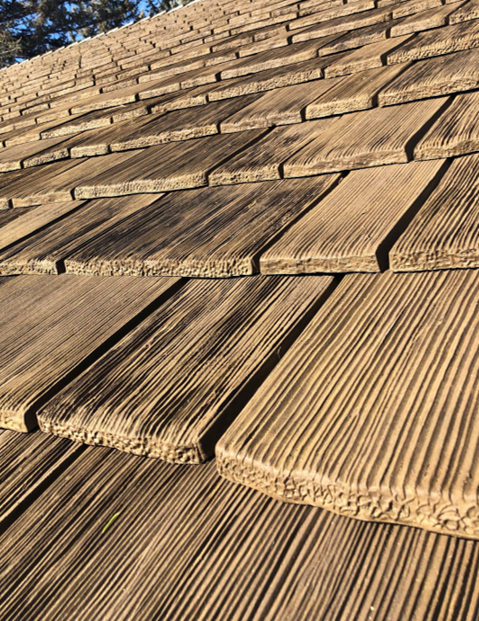Finest Practices for Ensuring Appropriate Roof Air Flow
Ensuring appropriate roof covering ventilation is crucial for the durability and effectiveness of a roof. A balanced intake and exhaust air vent proportion, generally 1:300, plays a critical function, with consumption vents ideally put at the reduced side of the roof for amazing air entrance and exhaust vents at the height for cozy air leave. Routine examinations to identify obstructions and preserve clear airflow are vital. In addition, maintaining insulation far from vents is vital to avoid air movement restriction. Understanding these foundational components sets the stage for more detailed understandings right into installment and upkeep practices that can dramatically enhance your roof's performance.
Understand Air Flow Essentials
Effectively understanding ventilation fundamentals is important for making sure the long life and effectiveness of roof covering systems. Effective ventilation minimizes dampness accumulation and temperature level extremes in the attic, both of which can cause substantial architectural damage gradually. A well-ventilated roof covering assists in protecting against common problems such as mold and mildew development, wood rot, and ice dams, which can jeopardize the integrity of the roof materials and the underlying frameworks.
The primary goal of ventilation is to promote the activity of air, enabling for a constant exchange between the outside and interior settings. This balance is attained with a mix of consumption and exhaust vents that collaborate to keep ideal airflow. Intake vents, usually situated along the eaves or soffits, allow fresh air to get in the attic space, while exhaust vents, usually situated at or near the roof ridge, allow warm, humid air to get away.
Trick variables influencing the efficiency of roof covering air flow include appropriate placement, sufficient sizing, and guaranteeing that both consumption and exhaust vents are unhampered. Routine inspection and maintenance are important to recognize potential blockages, damage, or inefficiencies in the ventilation system, thus guarding the roof covering's efficiency and longevity.
Sorts Of Roof Covering Vents
Roofing vents play a crucial duty in keeping effective attic ventilation and, by expansion, the overall health and wellness of the roofing system. Various types of roof covering vents are available, each with special advantages customized to details roof requirements.

Soffit vents are mounted under the eaves and operate in tandem with roofing vents to make certain a balanced consumption and exhaust system. By enabling cooler air to enter from below, soffit vents promote the expulsion of hot air through top vents. Gable vents, located on the outside walls of the attic, offer one more reliable solution, especially in homes with saddleback roofs.
Evaluate Your Current Air Flow

Following, think about the age and Going Here condition of your roof products and air flow elements. Older systems may not follow current building regulations or might have worn away over time, minimizing their performance. Conduct a detailed exam to identify any kind of signs of damage, such as corrosion, damage, or spaces that could compromise the system's efficiency.
Furthermore, measure this post the attic room temperature and humidity levels. Heats and moisture can indicate poor air flow - gainesville roofing companies. Make use of a hygrometer and thermometer to get precise readings, contrasting them with exterior problems. Relentless discrepancies recommend potential issues that require attending to.
Installment Best Practices
Effective installation of roofing ventilation systems is extremely important for ensuring optimum performance and longevity. Appropriate setup starts with recognizing the particular ventilation demands of the roof covering and the building it covers. This entails calculating the proper ratio of consumption to wear down vents, generally sticking to the 1:300 policy, which specifies one square foot of air flow for every single 300 square feet of attic floor space.

The positioning of vents is equally essential. Intake vents must be set up at the roofing system's reduced edge, usually in the soffits, to permit trendy air to go into. Exhaust vents, on the other hand, must be installed near or at the roofing's peak to facilitate the departure of cozy, damp air. This produces an all-natural air movement that helps preserve temperature and moisture equilibrium within the attic room.
Seal all vent links diligently to stop air leaks and potential water infiltration. Use high-grade materials and comply with supplier guidelines to ensure durability and performance. In addition, integrating ridge vents with baffles can considerably enhance air movement efficiency by preventing wind-driven rainfall and snow from entering the attic.
Inevitably, exact installment of roof covering ventilation systems mitigates potential problems such as mold development, ice dams, and architectural damages, guaranteeing the roofing system's honesty and the building's general health.
Normal Maintenance Tips
Consistency in upkeep methods is essential to guaranteeing the lasting effectiveness of roof covering air flow systems. Normal examinations are important, preferably done biannually-- in the spring and fall. Throughout these inspections, ensure that vents are devoid of debris, nests, and various other blockages that might restrain airflow. Check for any indications of wetness build-up or mold and mildew, as these can show inappropriate ventilation or leaks (roofing companies).
Cleaning the vents is an additional vital task. Make use of a soft visit this page brush or a vacuum cleaner to eliminate dirt and debris from consumption and exhaust vents. Beware not to harm the vent screens or louvers throughout the process. Additionally, examine the attic room space for any kind of indicators of water damages, which might compromise the stability of the roof.
Proper insulation is similarly crucial. Ensure that attic room insulation does not obstruct the vents, as this can seriously restrict airflow. Reposition or replace it to preserve an efficient obstacle. if any insulation has moved or settled.
Lastly, change any type of harmed or missing components without delay. Damaged vents, fractured shingles, or scrubby flashing can all add to poor ventilation and ought to be resolved right away. Normal upkeep makes sure that the roof air flow system functions efficiently, therefore extending the life expectancy of the roofing system itself.
Final Thought
Making sure proper roof covering ventilation is paramount for maintaining the efficiency and toughness of a roof. Adherence to the 1:300 consumption and exhaust air vent proportion, coupled with the tactical positioning of vents, is essential. Regular semiannual examinations, debris cleaning, and making sure insulation does not block airflow are important practices. Applying these finest methods will certainly cultivate a well-ventilated roof covering system, consequently alleviating potential problems connected to moisture accumulation and too much warmth, ultimately prolonging the roof covering's life-span.
A well balanced consumption and exhaust vent ratio, frequently 1:300, plays a critical function, with intake vents ideally put at the lower edge of the roofing system for amazing air entry and exhaust vents at the height for warm air departure. Intake vents, normally situated along the soffits or eaves, permit fresh air to enter the attic area, while exhaust vents, typically located at or near the roofing ridge, make it possible for hot, moist air to run away.
Soffit vents are installed under the eaves and job in tandem with roof vents to make certain a balanced consumption and exhaust system. By allowing cooler air to go into from below, soffit vents assist in the expulsion of warm air through top vents. Adherence to the 1:300 intake and exhaust air vent proportion, paired with the calculated positioning of vents, is necessary.
 Anthony Michael Hall Then & Now!
Anthony Michael Hall Then & Now! Andrew Keegan Then & Now!
Andrew Keegan Then & Now! Gia Lopez Then & Now!
Gia Lopez Then & Now! Raquel Welch Then & Now!
Raquel Welch Then & Now! Tyra Banks Then & Now!
Tyra Banks Then & Now!